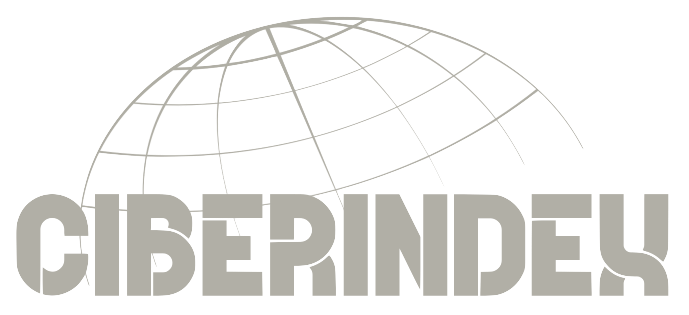Tratamiento fisioterapéutico mediante Estimulación Magnética Transcraneal en el accidente cerebrovascular
Physiotherapeutic treatment by Transcranial Magnetic Stimulation in cerebrovascular accident
Resumen
Bibliografía
1. Downie, P. CASH. Neurología para fisioterapeutas. 4ª ed. Buenos Aires: Editorial Médica Panamericana; 1989.
2. Graef P, Dadalt MLR, Rodrigués DAM da S, Stein C, Pagnussat A de S. Transcranial magnetic stimulation combined with upper-limb training for improving function after stroke: A systematic review and meta-analysis. J. Neurol. Sci. 2016; (369): 149-158.
3. Faralli A, Bigoni M, Mauro A, Rossi F, Carulli D. Noninvasive Strategies to Promote Functional Recovery after Stroke. Neural Plast. 2013;1-16.
4. National Institute of Neurological Disorders and Stroke. National Institutes of Health. Stroke: Hope Through Research. Maryland: 2000. (Disponible en https://catalog.ninds.nih.gov/pubstatic//20-NS-2222/20-NS-2222.pdf) [acceso: 20/03/2021].
5. Cano de la Cuerda R, Collado Vázquez S. Neurorrehabilitación. Madrid: Editorial Médica Panamericana; 2012.
6. Bayón M. Estimulación magnética transcraneal en la rehabilitación del ictus. Rehabilitación. 2011; 45(3): 261–267.
7. Long H, Wang H, Zhao C, Duan Q, Feng F, Hui N, et al. Effects of combining high-and low-frequency repetitive transcra-nial magnetic stimulation on upper limb hemiparesis in the early phase of stroke. Restor. Neurol. Neurosci. 2018; 36(1): 21-30.
8. Du J, Tian L, Liu W, Hu J, Xu G, Ma M, et al. Effects of repetitive transcranial magnetic stimulation on motor recovery and motor cortex excitability in patients with stroke: a randomized controlled trial. Eur. J. Neurol. 2016; 23(11): 1666-1672.
9. León Ruiz M, Rodríguez Sarasa ML, Sanjuán Rodríguez L, Benito-León J, García-Albea Ristol E, Arce Arce S. Eviden-cias actuales sobre la estimulación magnética transcraneal y su utilidad potencial en la neurorrehabilitación postictus: Ampliando horizontes en el tratamiento de la enfermedad cerebrovascular. Neurología. 2018; 33(7): 459-472.
10. Sherrington C, Herbert RD, Maher CG, Moseley AM. PEDro. A database of randomized trials and systematic reviews in physiotherapy. Man Ther. 2000; 5(4): 223-6.
11. Aşkın A, Tosun A, Demirdal ÜS. Effects of low-frequency repetitive transcranial magnetic stimulation on upper ex-tremity motor recovery and functional outcomes in chronic stroke patients: A randomized controlled trial. Somatosensory & Motor Research. 2017 Jun; 34(2): 102-107.
12. Cha HG, Kim MK. Effects of strengthening exercise integrated repetitive transcranial magnetic stimulation on motor function recovery in subacute stroke patients: A randomized controlled trial. Technology and Health Care : Official Jour-nal of the European Society for Engineering and Medicine. 2017; 25(3): 521-529.
13. Meng ZY, Song WQ. Low frequency repetitive transcranial magnetic stimulation improves motor dysfunction after cerebral infarction. Neural Regeneration Research. 2017; 12(4): 610.
14. Barros Galvão SC, Borba Costa dos Santos R, Borba dos Santos P, Cabral ME, Monte-Silva K. Efficacy of coupling repetitive transcranial magnetic stimulation and physical therapy to reduce upper-limb spasticity in patients with stroke: A randomized controlled trial. Archives of Physical Medicine and Rehabilitation. 2014 Feb ;95(2): 222–229.
15. Vaziri PM, Bahrpeyma F, Firoozabadi M, Forough B, Hatef B, Sheikhhoseini R, et al. Low frequency repetitive tran-scranial magnetic stimulation to improve motor function and grip force of upper limbs of patients with hemiplegia. Iranian Red Crescent Medical Journal. 2014; 16(8).
16. Matsuura A, Onoda K, Oguro H, Yamaguchi S. Magnetic stimulation and movement-related cortical activity for acute stroke with hemiparesis. European Journal of Neurology. 2015: 22(12): 1526-1532.
- Resumen visto - 881 veces
- PDF descargado - 892 veces



